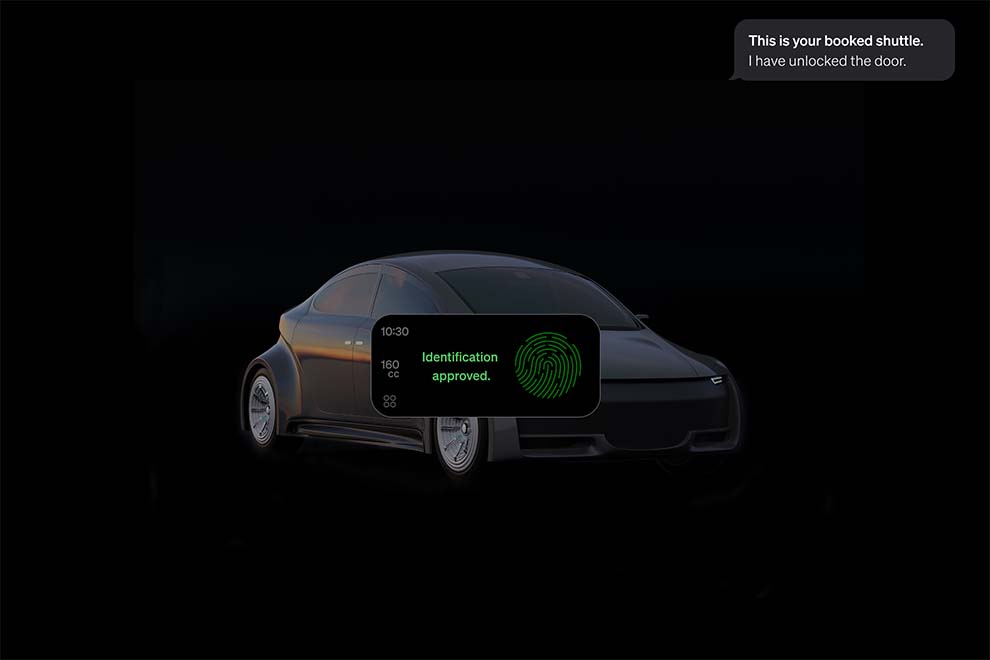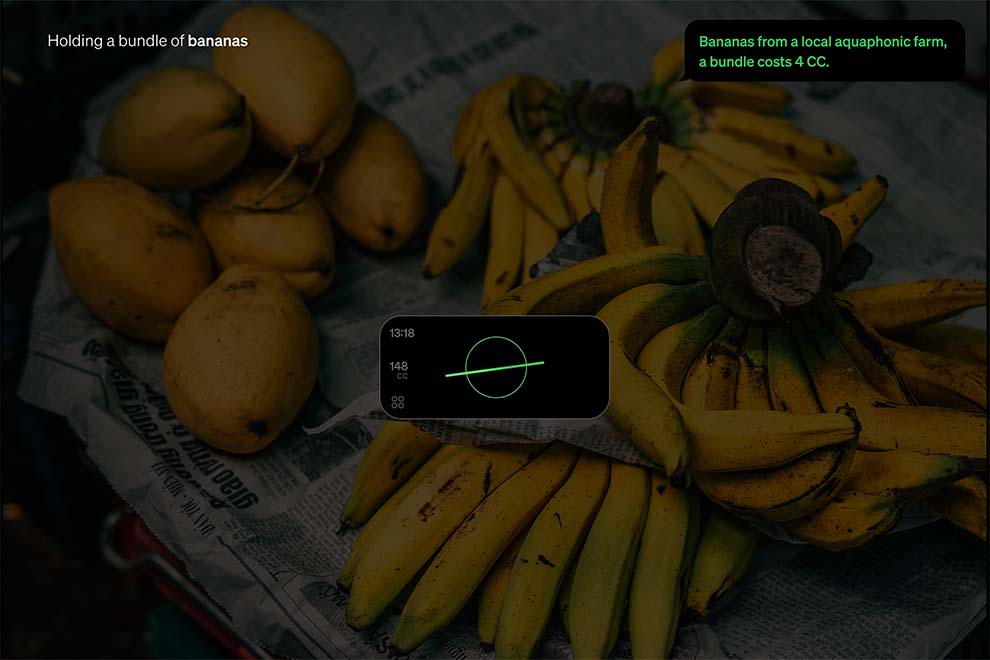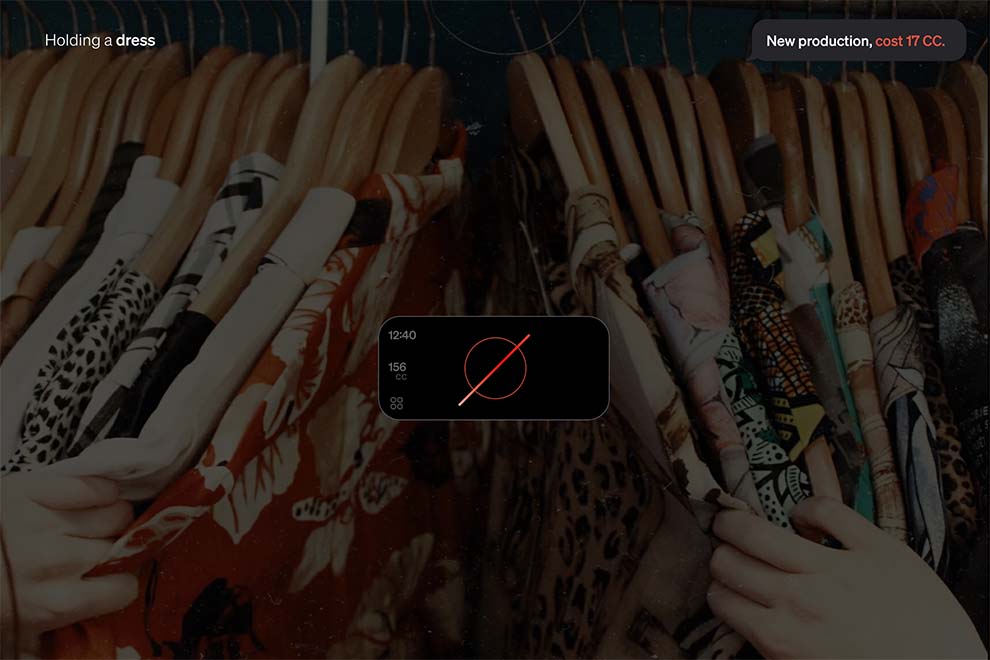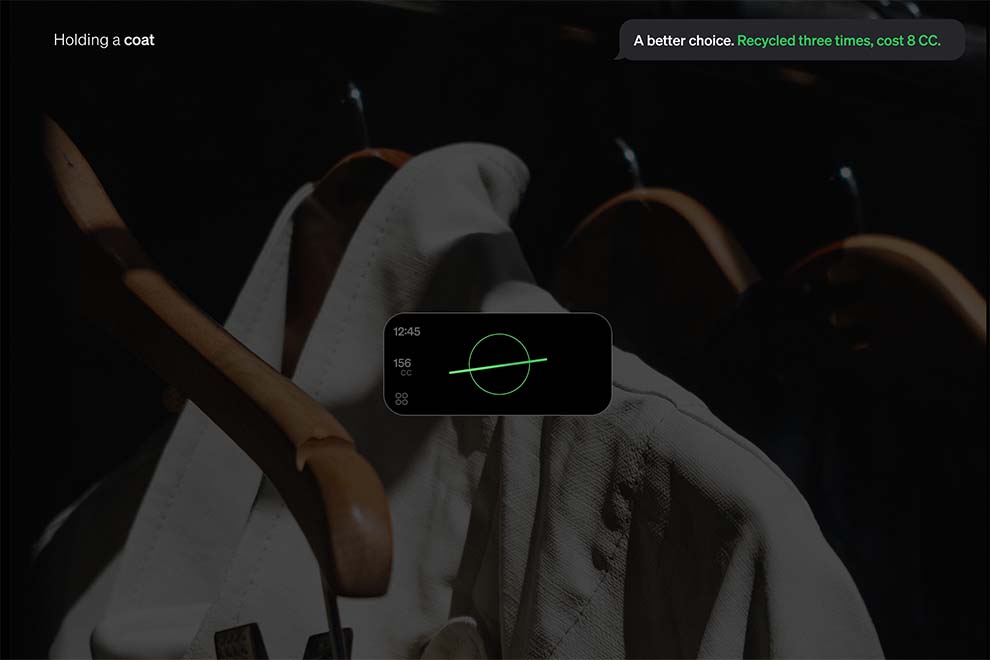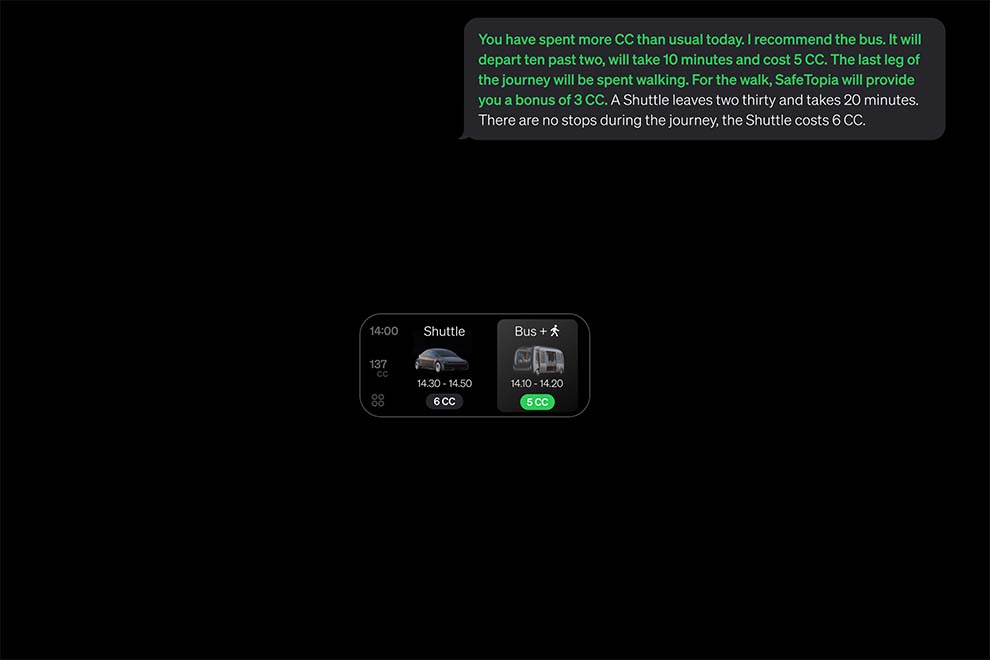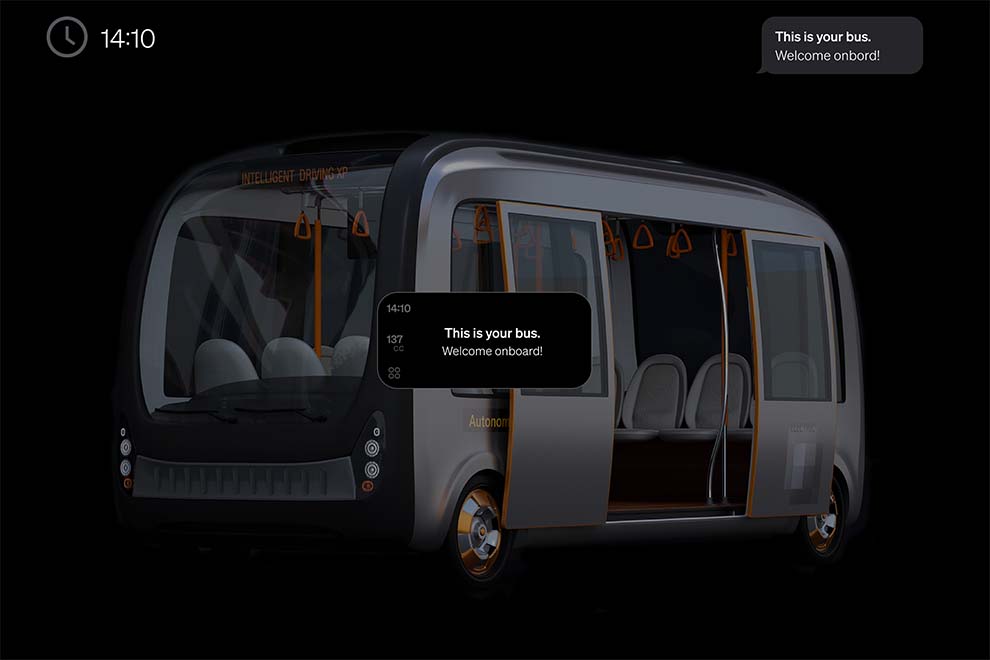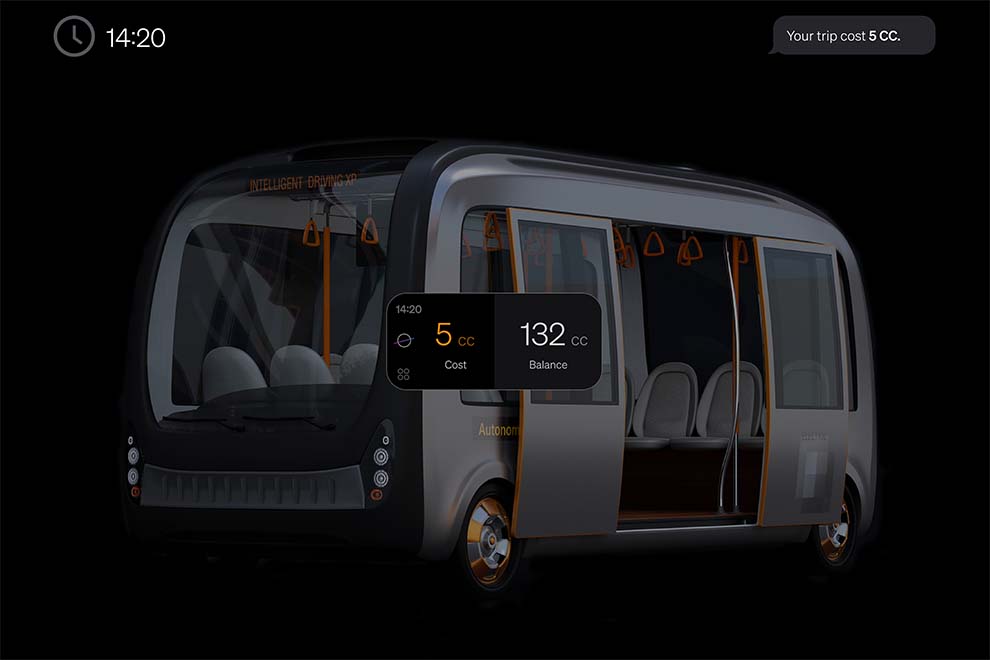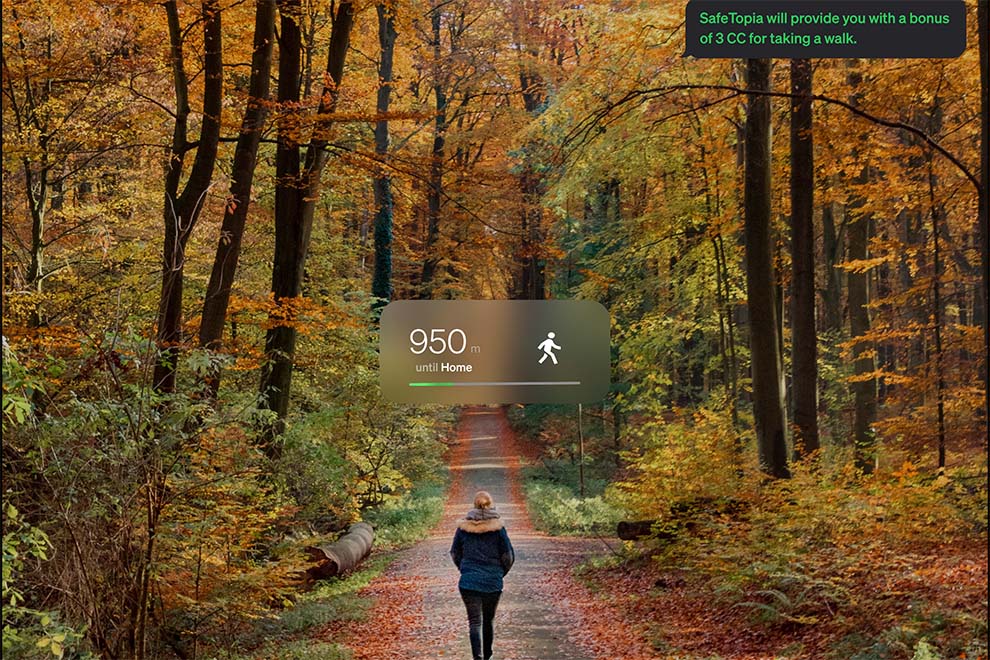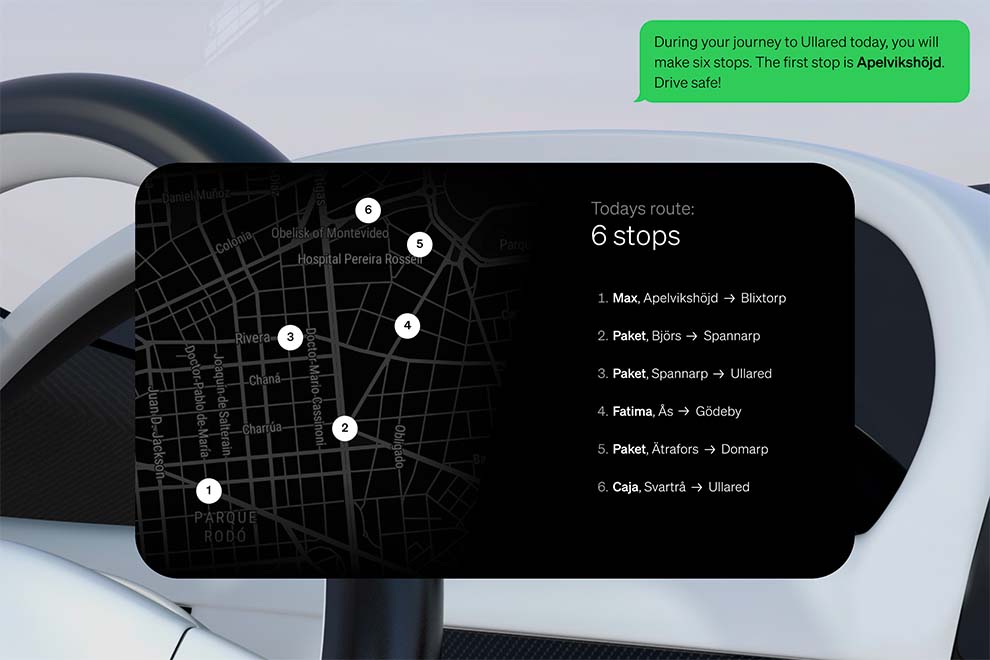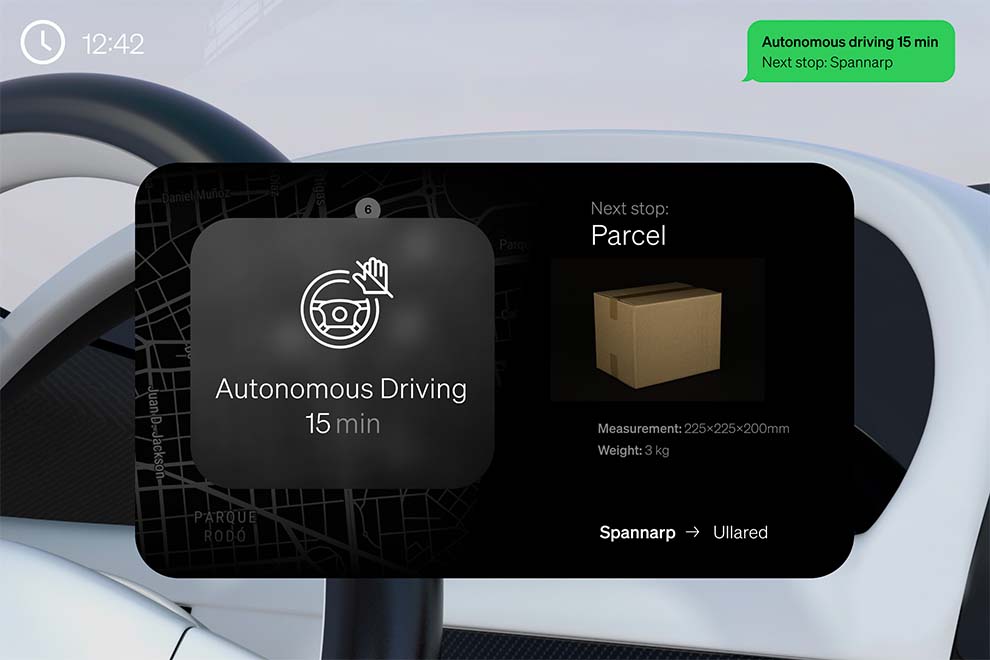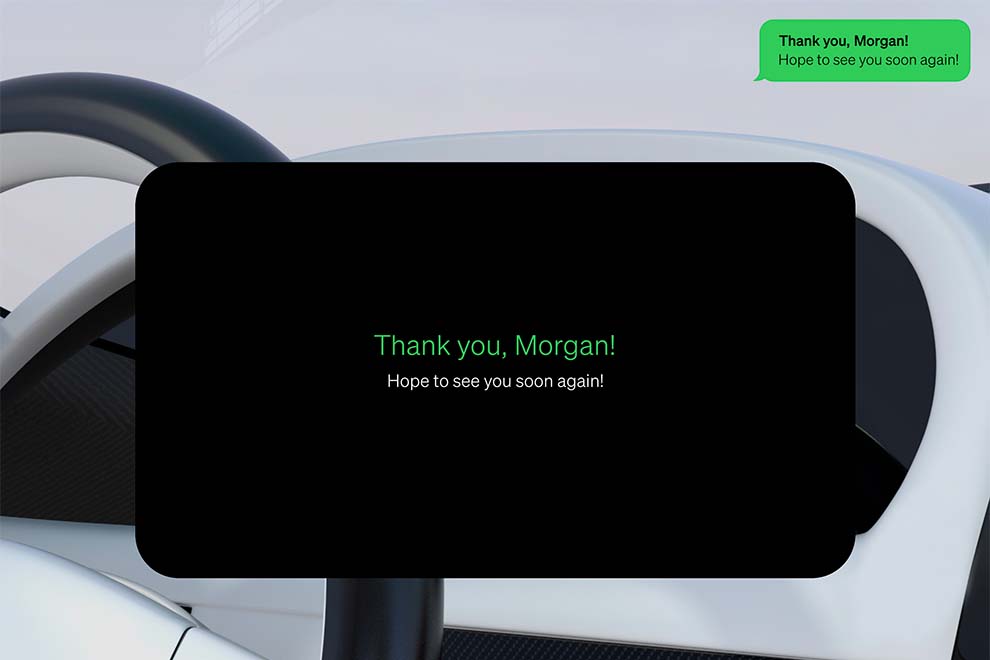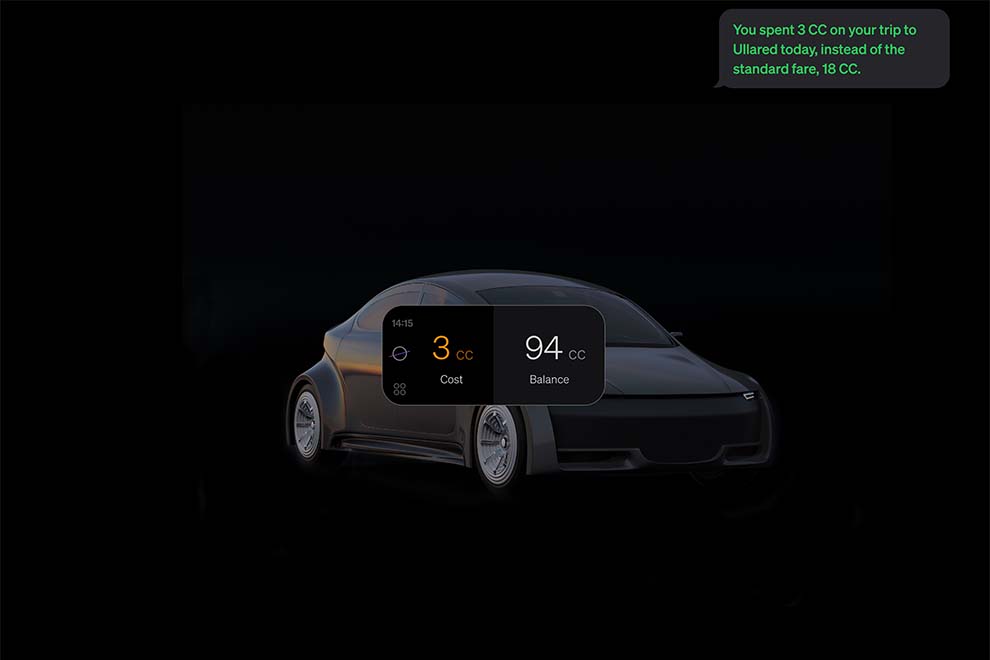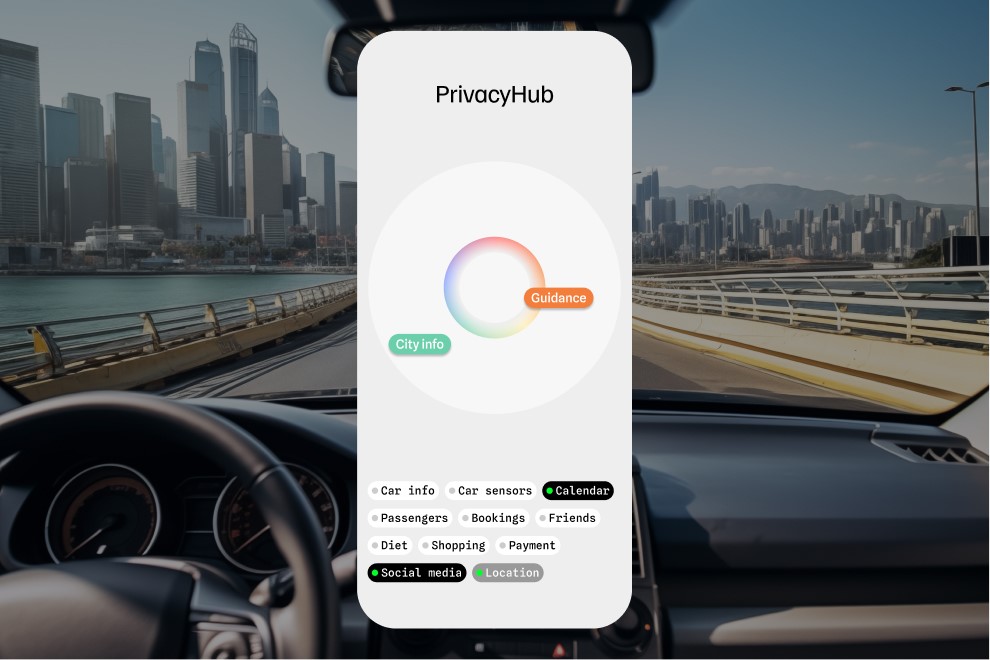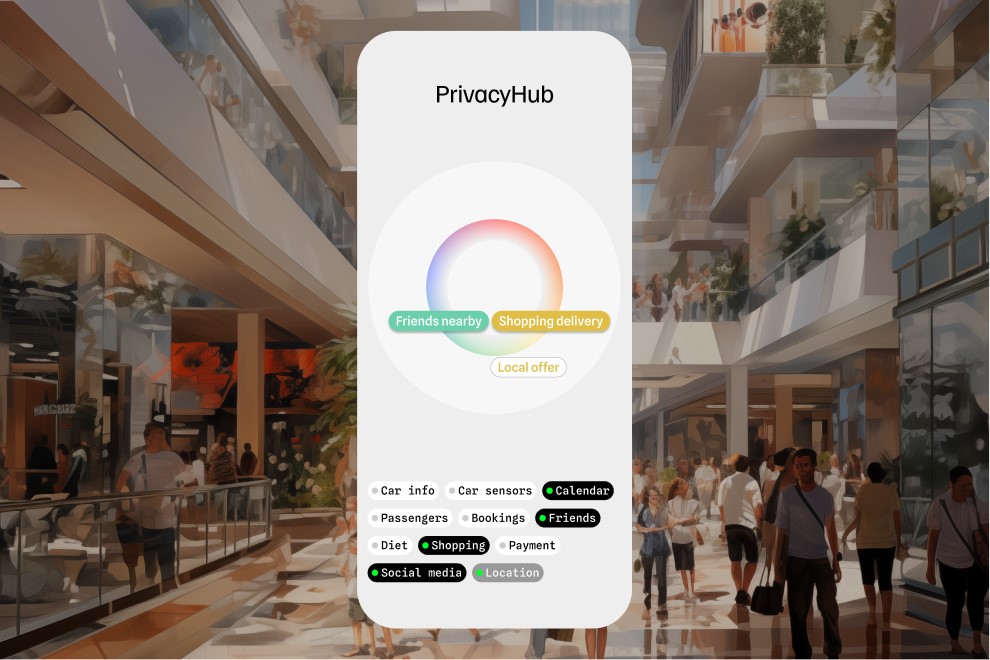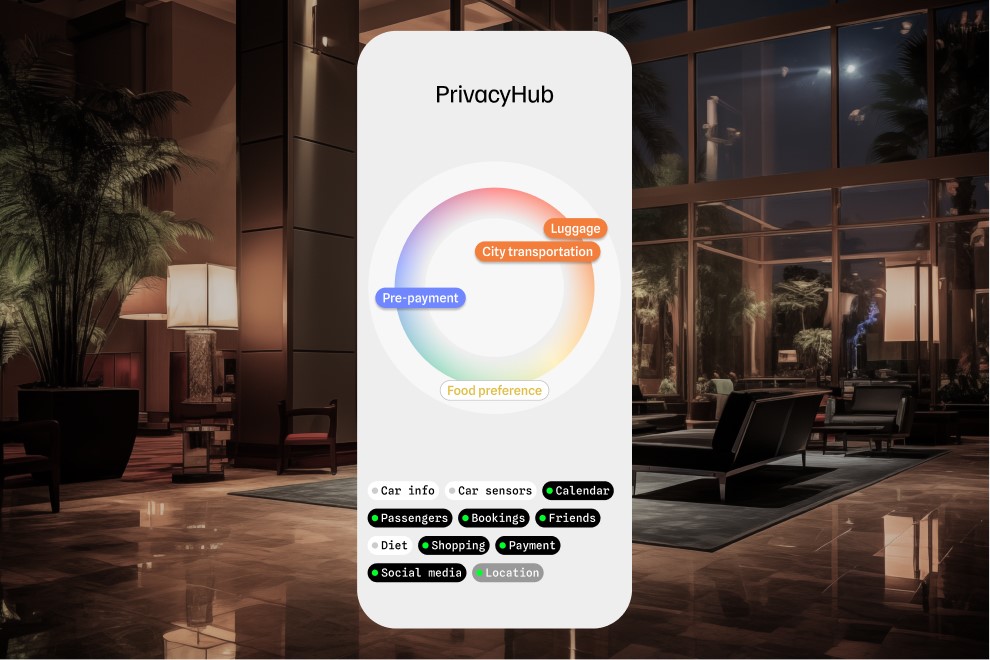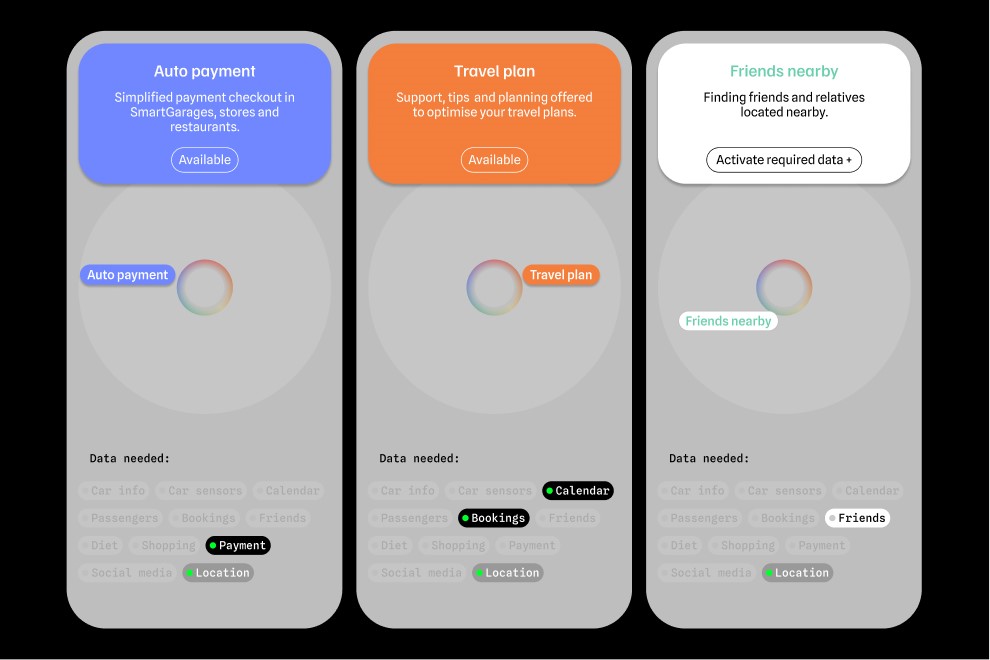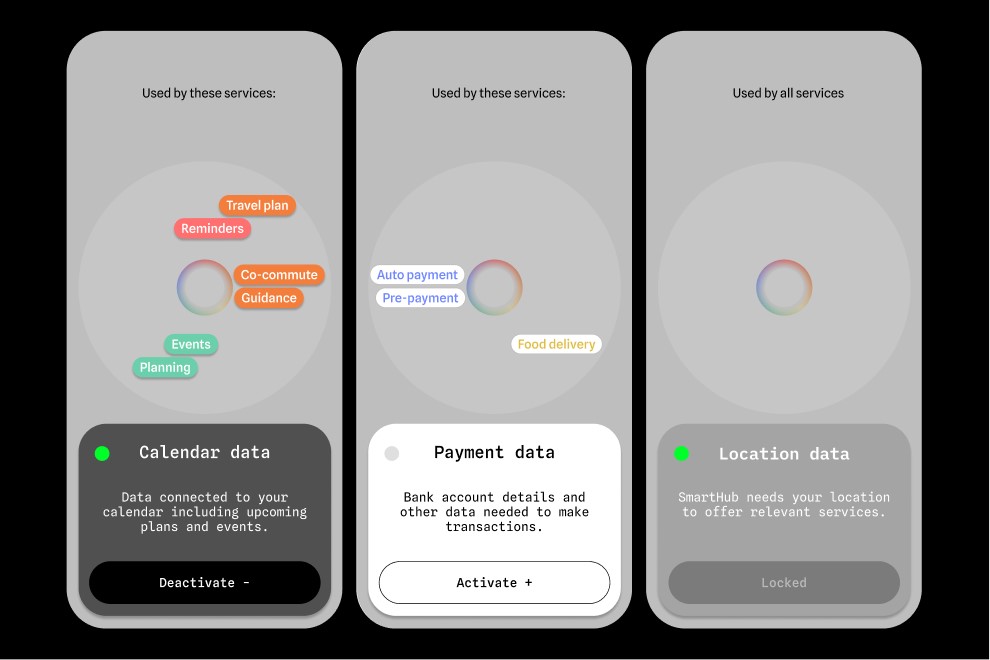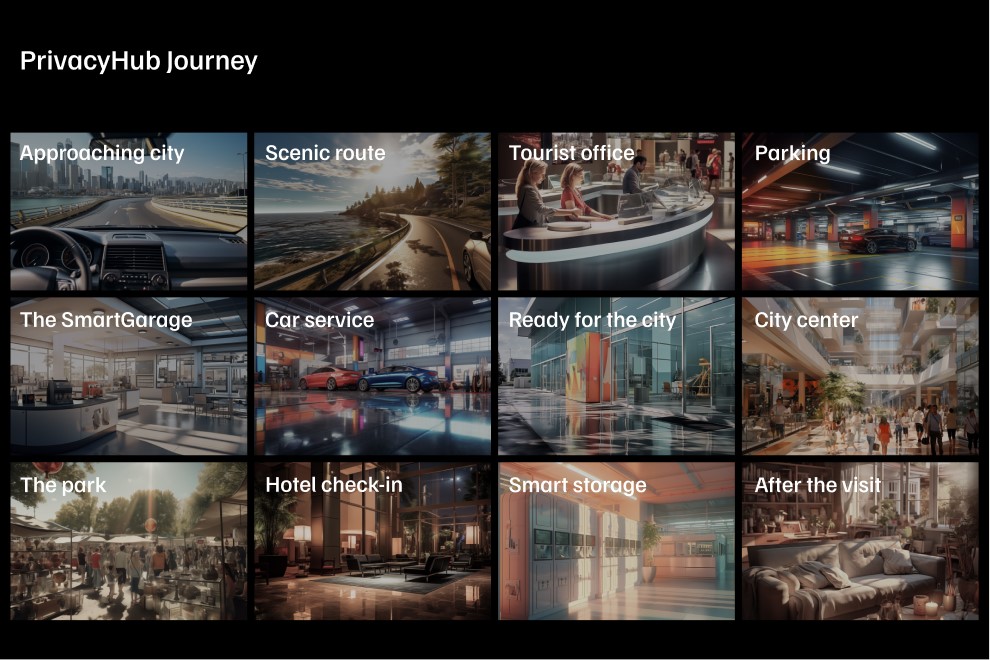OSMaaS – Designing Open and Self Organising Mechanisms for Sustainable Mobility as a Service
Mobility as a Service (MaaS) is a way to enable individuals a choice of transportation method – for example a bike, car or bus – depending on their needs. It is a shift from personally owned modes of transportation towards mobility provided as a service. OSMaaS is a so called Synergy project within the Halmstad University Knowledge and Competence Center. The project is intradisciplinary and aims to develop MaaS platforms by using service design methods. Subprojects are within Business Model Innovation, Design Ethnography and Technical Design.
Background and research question
Mobility as a Service (MaaS) is the value adding integration of different forms of transport services into a single mobility service that is available on-demand. To meet customer needs, MaaS offers various types and combinations of transport options, such as public transport, car, taxi or bicycle rental, leasing or a combination of these. For the user, MaaS provides added value by giving the customer access to the full range of services through a single consistent interface and payment channel instead of using multiple tickets. MaaS makes available easy to use solutions for meeting individuals' mobility needs by reducing the complexity that arises when individual trips are combined into larger and more complex transport flows.
Single and multi-modality service platforms
MaaS exists today largely on conceptual level with some examples of companies offering MaaS solutions. Existing MaaS are one of two kinds: single modality or multi-modality service platforms. The single modality platform connects a service provider to a customer, what is known as a two-sided market. The taxi service provider Uber is the most well-known single modality platform. Uber’s impact results from its open design: any service-provider can connect to the platform, define the level of service they are offering, and directly interact with customers. Therefore, the service easily scales within its single modality.
The multi-modality platform involves more modalities and service providers who form an ecosystem with complementing services that can meet a greater variety of customer needs for point-to-point mobility in a flexible and usable way. The multi-modality platform is a multi-sided market that handle a higher degree of complexity. Still, the existing platforms of this type do not scale easily. The reason is their closed design: the platform requires all service providers to build solid alliances with the platform owner and the other service providers, which is both costly and uncertain. Existing multi-modality platforms include smaller groups of service providers and the modalities they cover (for example a bus operator, taxi company, car-pool and bicycle rental). Each installation covers a limited area, typically a city or a region. There are several pilots and case studies of such platforms, for example TransitApp, Mobility 2.0 and UbiGo. These platforms largely adhere to the original definition of MaaS, emanating from a desire to increase public transport in cities.
OSMaaS main research question
This raises the initial question of how to design a MaaS that both has the ability to scale and can generate ecosystems with multiple service providers that support multimodal mobility. Current MaaS development goes towards increasing use of complementary services on the demand side to solve transport needs. To provide customers with full range of mobility – multimodal solutions – companies are increasingly dependent on integration of other service providers to complement them where they have no or limited capacity. MaaS platforms are likely to become the dominant platform for integrating mobile services, but extant research has little to offer on how to design service platforms for multi-stakeholder and multimodal MaaS ecosystems that can identify the variety and development of user mobility needs, easily integrate new service providers and thus scale. To become sustainable, MaaS platforms must be designed to self-organize the integration of providers of services for multimodal mobility. We thus define MaaS sustainability as the ability to continuous and efficient integration of value adding services to customers, and pose the following core synergy question:
How can a MaaS service platform be designed to enhance continuous integration of mobility services for multimodal mobility of people and their goods in a sustainable way?
Contrubution to industrial partners
The project contributes with solutions for a specific challenge facing the collaborating business partners: how transport companies aiming for breakthrough service innovation capability can leverage the company’s strategic position on the market by using a MaaS platform to enhance continuous integration of value adding mobility services.
Subprojects within OSMaaS
Contribution of the different subprojects towards answering the core research question of the Synergy project OSMaaS:
The project will use a Service Design approach as the scientific base for the synergy. The Service Design project is thus the synergy part of the project that owns the core question. Service Design fits very well to enable continuous integration of mobility services over time, since it deals with how services are delivered over multiple channels and business models. The synergy integrates results from three sub-projects. Together they provide sufficient and necessary results to answer the core question and to integrate research results in the design of the MaaS platform where they are tested and verified.
Business Model Innovation deals with the companies’ transformation from product to a product-service oriented business in the context of data driven mobility solutions, and contributes with methods for developing business models and governance frameworks for open innovation in MaaS ecosystems. The sub-project is motivated by the need to understand how value is created and captured with digital mobility platforms.
Design Ethnography will empirically investigate user experiences and expectations of future mobility solutions. We know relatively little about users’ (people and their goods) actual mobility practices, their expectations of how mobility services can support them in their everyday life and what influences decisions about transport modalities. The project is motivated by the need for in-depth design-ethnographic research about requirements for demand-side modeling.
Technical Design will develop the platform’s logic and the necessary optimizations, including search algorithms for complex combinations of the different travel modalities and discovery and management of users’ preferences. Given the access to user mobility patterns via the product design, the project will provide tools to do meaningful analysis of user data based on the actual use of the platform. The sub-project is motivated by the need for reliable and optimized handling of data to achieve a positive user experience, both in terms of efficiency and relevance, and to provide input to the development of new services and businesses from big data, machine learning and AI technologies.
OsMaaS results
Reports produced by the researchers:
Report 1, May 2020:
Report 2, August 2021:
Designing Smart Mobility Systems: Mapping the future to Human-Centered Intelligent MaaS Pdf, 2.5 MB.
Pdf, 2.5 MB.
For scientific publications, see each participating researcher's publications in DiVA.
OSMaaS Service Design Framework
The project Open and Self Organizing Mechanisms for Sustainable Mobility as a Service (OSMaaS) ran between 2020 and 2024, hosted by Halmstad University and funded by The Knowledge Foundation. The project was a collaboration between researchers from service design, design ethnography, business model innovation, and intelligent systems, and the companies Volvo Cars, WirelessCar, Polestar, and Devoteam. One of the project’s outputs is the OSMaaS Service Design Framework that integrates research from the different activities in the project into a toolkit for service designers.
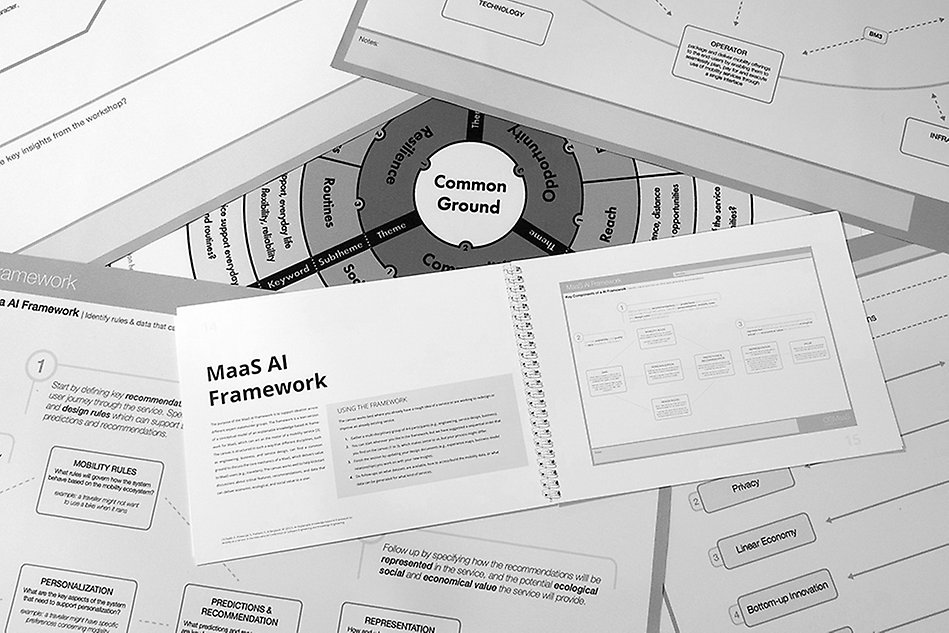
The OSMaaS Toolkit
The OSMaaS toolkit consists of a set of canvases that you can use to support co-design and co-creation in the design of MaaS. Each canvas is designed to support joint discussion about key aspects of a mobility service, highlighting areas that tend to be challenging to address as a single actor.
To help you get started, you can follow the canvas sequence suggested in the toolkit, starting with the traveler experience map, and ending in the MaaS AI Framework. However, the canvases are designed to fit into most design processes, so don’t be afraid to shuffle them and use them in a different order, if that fits your process better. The canvases can be printed directly from the Booklet pdf (link below). We recommend using at least A3 format (A2 recommended).
Link to OsMaas-toolikt in DiVA
Future scenarios with user cases
The future of mobility is uncertain. Electrification, autonomous vehicles, connectivity and datafication, threats to the environment, and pandemics are only a handful of changes that will affect the future of mobility. In the OSMaaS project we developed multiple future scenarios as a foundation to better understand how to design services for mobility that currently is largely unknown and unpredictable. The scenarios were based on the analysis of interviews with experts, futurists and authors as well as research and white papers. A number of workshops were held with the involved companies, researchers and representatives from public sector organizations. Based on the analysis we identified a list of dynamics that could affect the future of mobility in impart ways, and from there we created four potential future worlds. Each world expresses tensions between different forces that are likely to affect mobility in that particular world. The identified tensions were between: agency-regulation, privacy-transparency, linear-circular economy, bottom-up-top down innovation, rural-urban, ownership-sharing.
The first is called Mobility Inc and is characterized by private interests organizing mobility with little government control. The second world, Sustain or Perish, is characterized by mobility that needs to be regulated to reach globally identified goals for sustainability. This generates a need for sharing and smart services that will optimize resources needed for traveling. The third world is Circular Capitalism where individual agency, high data transparency and availability, and a bottom-up circular economy dominates the mobility space. Services build on opportunities created by big data in combination with AI and uses automation to promote a circular economy that will reinforce sustainability. The fourth world, Sharetopia is a world where ecological collapses has put hard travel caps on both business travel and personal travel. Each citizen, company and organization has a fixed carbon credit (CC) budget to spend on for example travel, shopping, and work. CO2 units are transfered and used as payment credits. Business will be built on new models based on peoples’ motivation to reduce their CC spending (for example by sharing a car).
We decided to implement a probe based on the Sharetopia world as our first step. Two use scenarios were created. The images below show two use scenarios: Elsa and Morgan and how they use mobility services in Sharetopia.
User case in Sharetopia: Elsa
Image description of user case Elsa
Image 1
Elsa is retired and lives outside of Varberg. Today, she wants to meet her friend Agnes and go for coffee in the town center. Although she is usually ordering foods and goods to her home, she looks forward to visiting the Farmer’s Market.
Her travel assistant shows possible ways to go into town, and an AI recommends the "best" way for her according to her preferences. Since she is in no rush, she chooses one of the "low CO2 options", by co-travelling in a shared shuttle. It’s more comfortable than a regular bus, and she usually meets people she recognizes on the shuttle. She also recognizes the shuttle driver Morgan who is on duty for her trip, which makes her feel comfortable and safe in her choice. She is also planning to buy a spring coat from a donate+shop tailor that specializes in refurbished clothing.
Image 2
Elsa arrives at Varberg and takes a coffee with her friend Agnes. She uses CO2 credits to pay for her coffee since the coffeeshop is part of the municipality’s environmental program, which is connected to the mobility platform. Elsa and Agnes go shopping for groceries and clothes. She usually gets her groceries delivered home automatically, but today she enjoys picking out fruits and vegetables herself. Her mobile travel assistant shows that locally grown bananas is the best environmental choice with less CO2 cost, which is what she also choses.
Image 3
Next stop is for shopping clothes. The travel app automatically scans the newly manufactured clothes that Elsa is interested in and informs her that they will cost 17 carbon credits (CC).
Image 4
When Elsa looks at recycled clothes, she is informed that they are a more environmentally friendly alternative. The scale on the app tips over from red to green to make Elsa aware that she can reduce CC cost to only 8 CC by choosing a recycled item. Elsa buys the recycled blouse.
Image 5
Elsa leaves her groceries at an outgoing delivery station at the Farmers’ Market and gets confirmation that the food and her new coat will be delivered to her house by 17:00 the same afternoon. After spending a lazy day in the town center, Elsa is getting ready to go back. She tells the app that she wants to go home and is provided with different travel options. She can either take a shared on-demand shuttle, or take the regular bus, which will generate less withdrawal from her monthly CC account.
Image 6
When identifying the bus in the street Elsa confirms her identity and is let into the bus.
Image 7
When arriving close to home, Elsa gets a summary of CC costs and her CO2 balance. She has 132 CC to spend the remaining month.
Image 8
Elsa walks the last mile in the sun and adds 3 CC to her account from her insurance company.
User case in Sharetopia: Morgan
Image description of user case Morgan
Image 1
Morgan is a student who lives in downtown Varberg. Being a driver for the shared mobility service allows Morgan to decrease his CO2 credit spending by volunteering to take passengers on his route. Today, Morgan is traveling from Varberg to Ullared to visit family, and signals his availability for people interested in traveling eastwards from Varberg. The shared mobility service AI notifies Morgan that his vehicle is ready for pickup.
Image 2
Morgan makes his route available on the mobile platform and instructs that he can extend his journey with 2 hours. Six travelers book themselves to join his route. The service dynamically plans a route from Varberg to Ullared with stops to pick up and drop off passengers and cargo. Morgan’s 40 minutes solo trip turns into a 2 hour multi-passenger, multi-stop commuting session.
Image 3
While the autonomous car drives to the next stop to deliver a parcel, Morgan takes a nap.
Image 4
Morgan drops off passengers and cargo, and reaches his final destination in Ullared, right on time to drop off the vehicle for a recharge!
Image 5
Morgan gets his carbon credit (CC) balance. He has saved 15 CC compared to if he had driven to Ullared by himself.
Simulator: PrivacyHub
PrivacyHub is a simulator developed for organizations designing mobility apps with a high degree of user privacy management. PrivacyHub has the shape of a mobility app that lets users manage their data before, during and after a journey by showing how the included mobility services use personal data. In contrast to the typical set-and-forget approach used in many mobility apps, PrivacyHub continually keeps the user aware of the connection between data and service. When a user activates a service, the app requests the user to confirm the use of the personal data needed to run the service. If the user blocks a particular type of data (e.g. calendar, payment, diet data, social media) the corresponding service is turned off. When a service is turned off, the app turns off the connected data sources and visualizes this to the user. At the end of a journey the user can choose to keep a profile based on the recent journey or delete the profile. The presentation shows use scenarios for a visit to a city for a weekend holiday including, for example travel, shopping, hotel stay, luggage transportation, restaurant booking, sharing position with friends. The tool can be used by organizations developing integrated mobility services to learn about user preferences by exploring user behavior regarding data sensitivity connected to use context and personal preferences.
Image description of PrivacyHub
Film
In the simulator you are on a journey visiting the city for a weekend holiday. You are assisted by the PrivacyHub app that gives you relevant offers on services based on where you are and your personal data profile. The app gives you a clear overview and full control of your personal data sharing. Throughout the journey you are faced with choices where you need to decide what services you want to have available and what data you are willing to share.
Image 1
As you start you get a short introduction on how to use the app. In the first scenario in the journey, you approach the city and get prompted to explore the different services offered.
Image 2
In the city center you get offered services connected to shopping. You also get the option to get notified if any of your friends happens to be around. All services show you information about what personal data you need to share.
Image 3
As you arrive at the hotel for a late check-in you get some convenient options. You can use the pre-payment service, luggage- and city transportation service for the next day. You can also share your diet data with the hotel for all your breakfast requirements.
Image 4
The service view gives you more information about what the service offers. You also get information about what data is required. You can also choose to activate all required data and make the service available.
Image 5
In the data view you get a specified description of the data. You can activate and deactivate specific data, and you also get a clear overview of what services are connected to it. The “Location data” is locked as it is required for all services in the PrivacyHub to be relevant.
Image 6
The main journey in the simulator includes twelve different scenarios. Each chapter is affected by the data you activate and what services are made available. In some cases, you also need to activate specific services to unlock scenario options.
About the project OSMaaS
Project period:
- February 1, 2020, to January 31, 2024
Financier:
- The Swedish Knowledge Foundation
Involved partners:
- Volvo Car Corporation
- Polestar
- WirelessCar
- Devoteam (previously called Jayway)
Project team at Halmstad University:
OSMaaS is an intradisciplinary research project with project members from the School of Information Technology (ITE) and the School of Business, Science and Engineering (FIH). The Future Mobility Center at Halmstad University is also involved in the project.
- Magnus Bergquist, project leader and leader of the Synergy project (ITE)
- Jesper Lund, leader of the Service Design synergy part (ITE)
- Magnus Holmén, leader of the subproject Business Model Innovation (FIH)
- Vaike Fors, leader of the subproject Design Ethnography (ITE)
- Slawomir Nowaczyk, leader of the subproject Technical Design (ITE)
- Sarah Pink, leader of Interdisciplinary Methodology (Halmstad University and Monash University)


